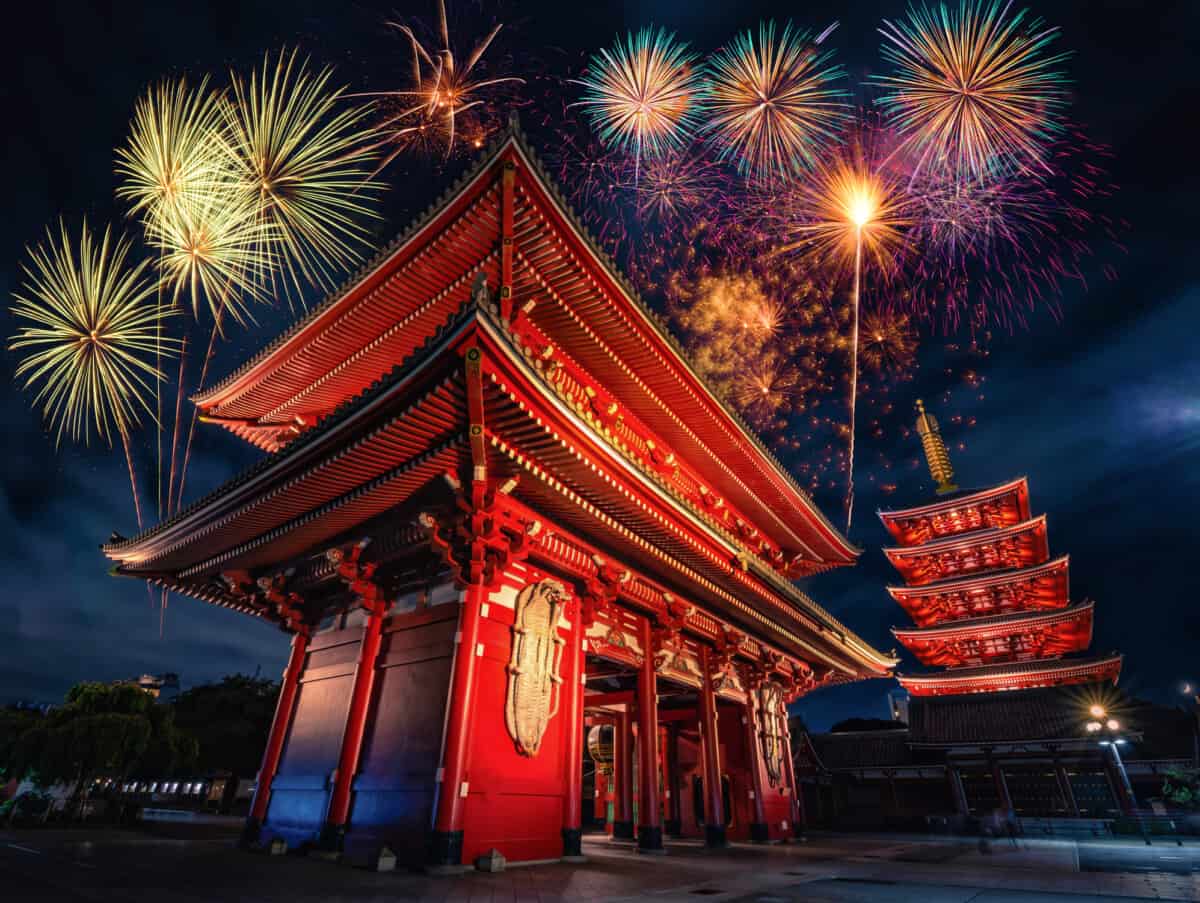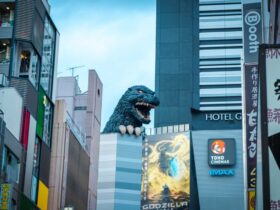Every weekend from July to September, Japan’s skies are filled with amazing fireworks displays. This spectacle is a large part of Japanese life throughout the country and every prefecture features at least one event. This is a long-standing and ancient tradition still popular today.
Fireworks, or Hanabi (花火), has worldwide renown in being some of the most innovative, breathtaking, and dazzling shows. These last for as long as two hours and streak Japan’s skies by the thousands of explosions and incredible night illuminations.
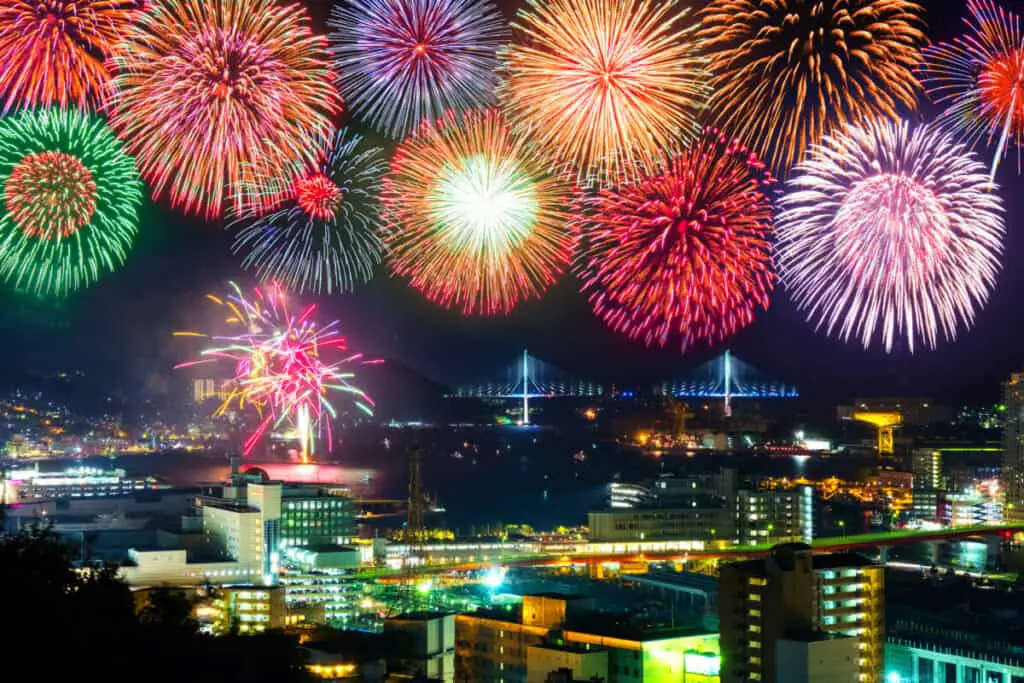
History of Hanabi in Japan
Hanabi is integral to Japanese summers and they originally had these demonstrations to ward off evil spirits. The fireworks come in a range of sizes and shapes that produce different effects.
As a matter of fact, Japan holds various world records for the largest fireworks known to man.
Types of Fireworks Launched
One of their more famous designs is the Yonshakudama shells. These are four feet in circumference (1.2 meters) and weigh about 925 pounds (420 kilograms). When they explode, they cover the sky in a half-mile-long (825 meters) area.
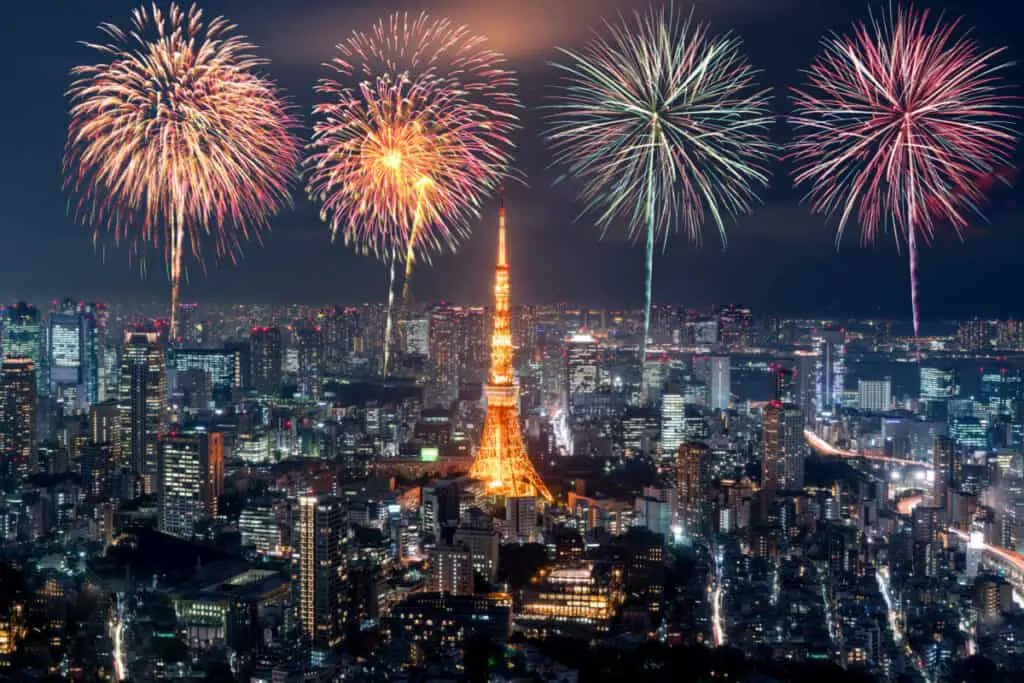
However, they have other shells that come in much smaller sizes yet are no less impressive. The most common types of fireworks are star mines. These spheres have a variety of burst patterns and color displays.
They also use Niagara sparklers placed under bridges, which look like the famous waterfall bridging New York and Canada.
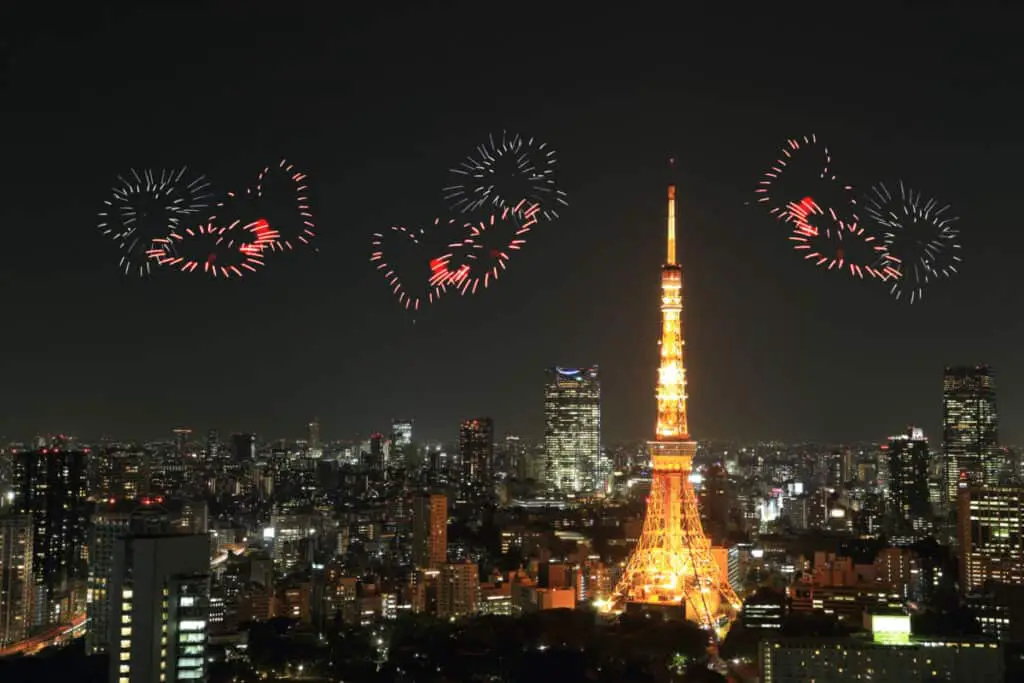
The Japanese also have shells that can exhibit faces, cartoon characters, and even hearts. This two-hour show ends with a grand finale with hundreds upon hundreds of fireworks launched at the same time.
Fabulous Festival Atmosphere
Another aspect of the Hanabi celebrations is the relaxed festival atmosphere. People dress in yukata, a kimono for summertime while lining the streets for fantastic street foods and games. As everyone has an excellent time, there are also a lot of people and it gets incredibly crowded.
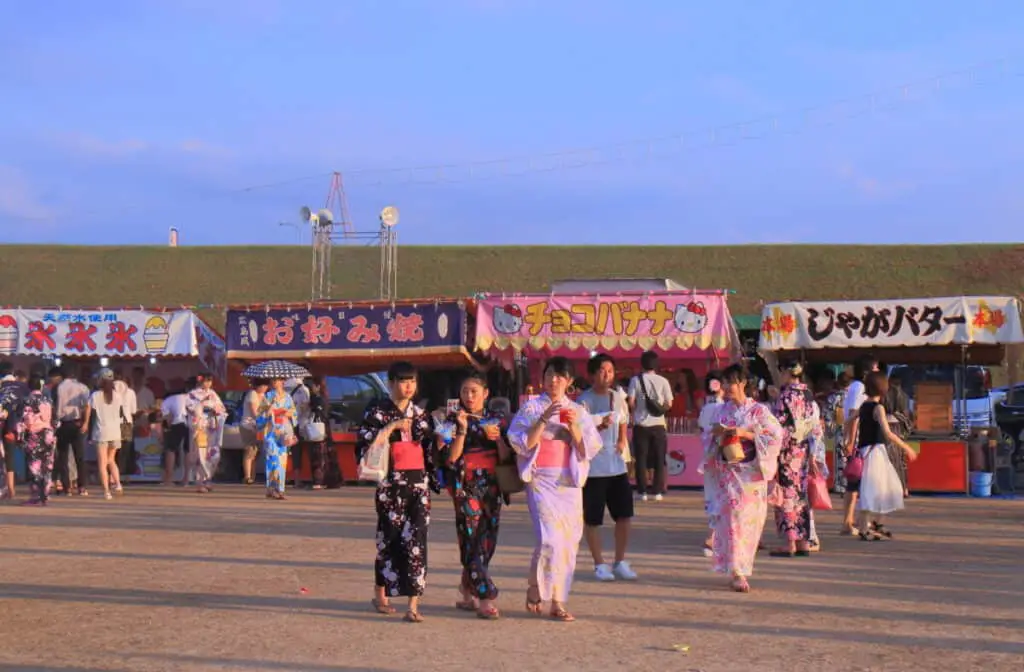
So, if you ever go to see one of these, it’s best to get there well beforehand to find a good viewing locale.
While larger cities like Osaka and Tokyo have a myriad of hotels to handle the vast crowds, smaller cities don’t have the room capacity to be as accommodating.
The Best Fireworks Shows in Japan
The following is a brief list of some of the more popular and spectacular performances throughout Japan. Every city and prefecture will have some kind of fireworks array throughout the spring and summer months.
Sumida River Fireworks
The Sumida River Fireworks of Tokyo dates back to 1733, making this one of the oldest and most recognized Hanabi shows in Japan. These launch from barges anchored between Ryoguku and Asakusa along the Sumida River. On the last weekend each year in July, the Sumida River sets off about 20,000 fireworks.
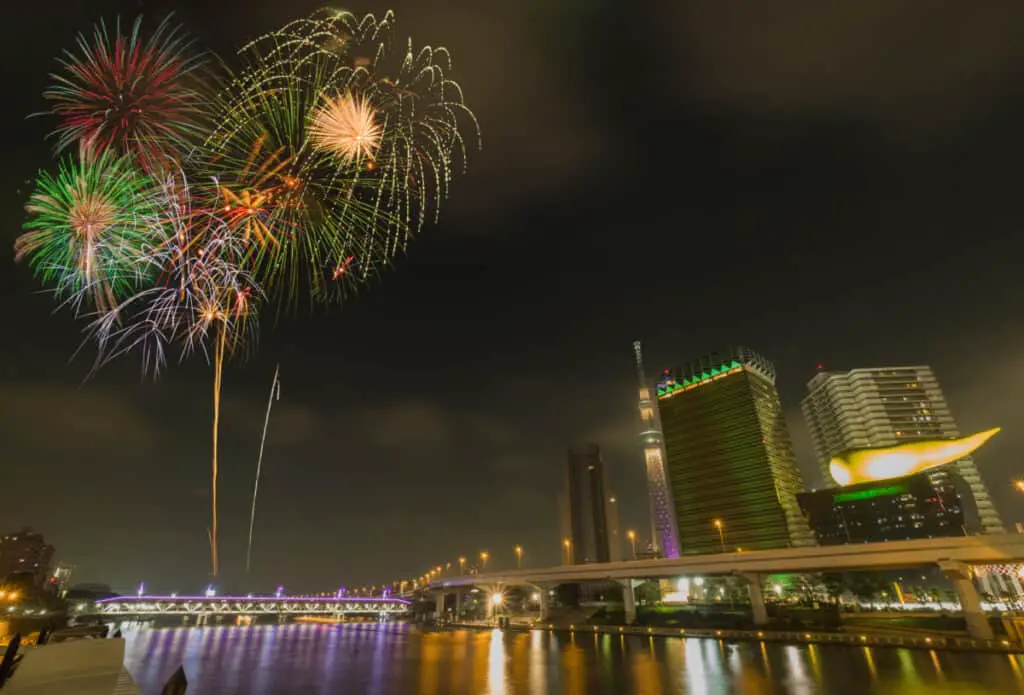
Atmosphere
The festival atmosphere is incomparable with tens of thousands of people strolling the streets, especially around the Sensoji Temple. Here, there are vendors offering food, games, and beverages.
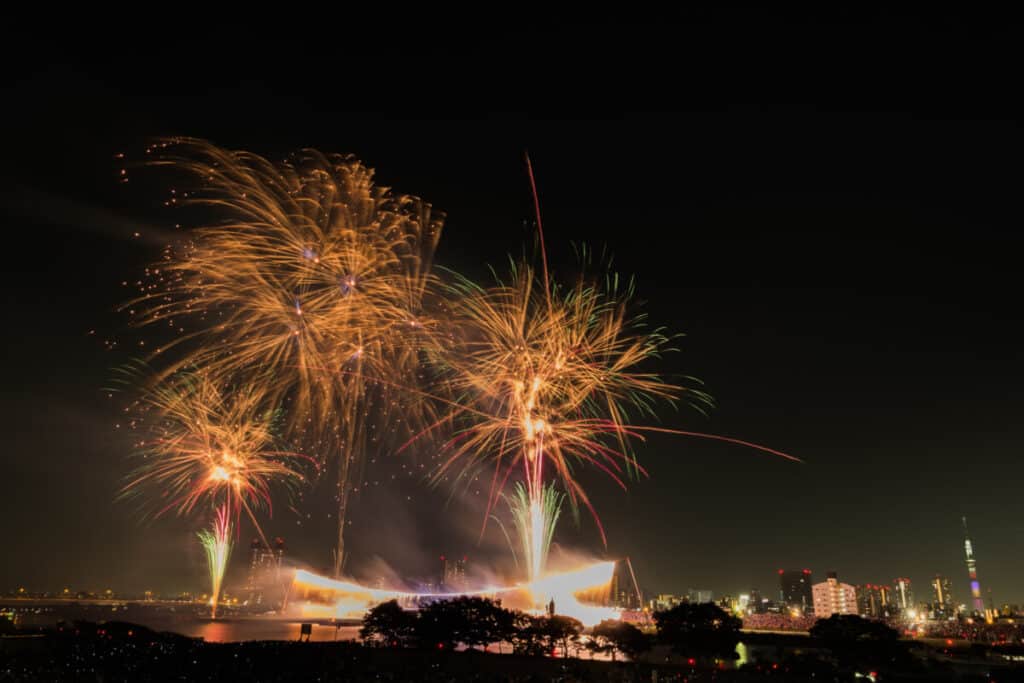
But finding a seat for this panorama is not impossible but will take a little effort to find a great vantage point. It’s important to note that it’s illegal to stop and view the fireworks from bridges because of the hazard it presents. It’s difficult to get a good view, but worth the hassle.
Nagaoka Fireworks
Along the Shinano River in Niigata Prefecture, the Nagaoka fireworks show usually takes place the first weekend in August. This particular event didn’t begin until just after WWII, featuring their signature phoenix-shaped fireworks.
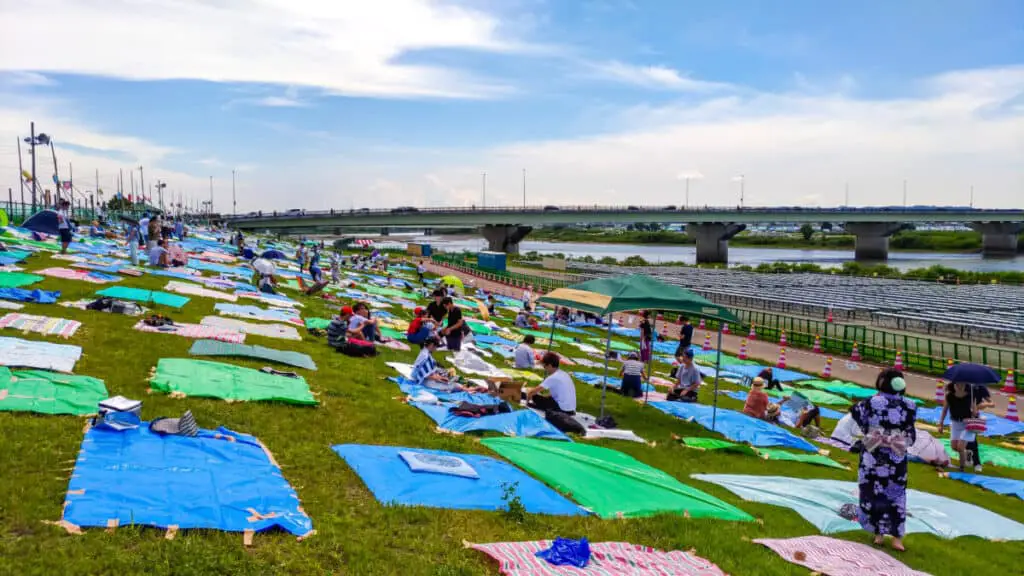
Niigata Prefecture has three fantastic Hanabi displays, but the Nagaoka fireworks are the most spectacular. The other two are in Kashiwazaki, a coastal town, and in Katakai, which is very mountainous terrain.
Firework Sizes and Types
This celebration runs over the course of two evenings with two straight hours of fireworks. It often features some of the largest and most impressive shells in Japan.
The finale stretches almost 1.25 miles (two kilometers) of the riverbank, making it one of the widest fireworks presentations in the world.
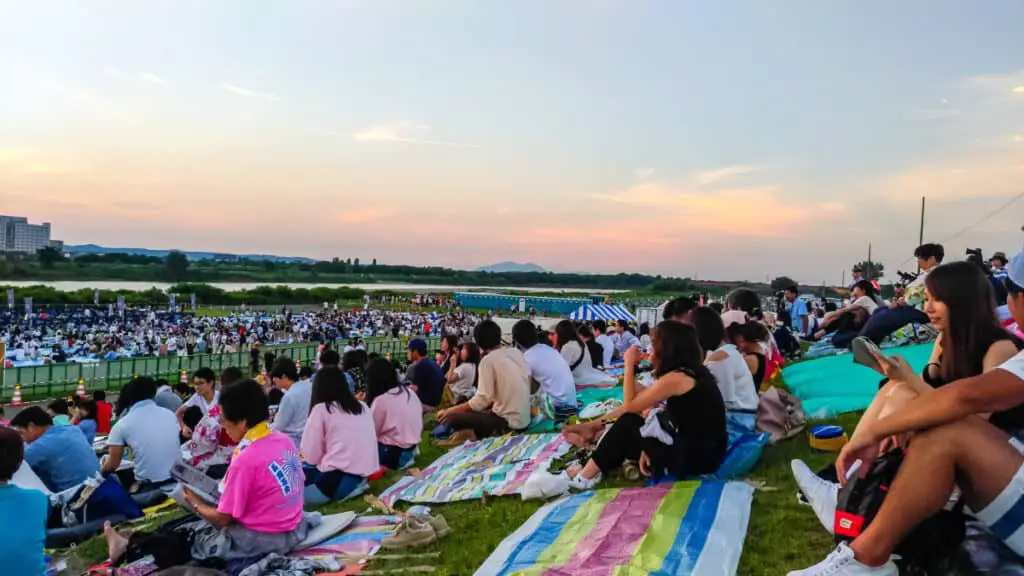
Among the 20,000 fireworks launched each year, these include Sanshakudama shells, which are giant fireworks that are over one yard in diameter. They also launch the Sanjakudama shells, which are 35 inches (90 centimeters) in diameter, and the famous Phoenix Shell.
The Phoenix Shell, which explodes in the shape of a phoenix, has become a symbol of renewal since the 2004 earthquake that hit Niigata. Therefore, this celebration doubles as a day of mourning for those who lost their lives in WWII and the earthquake.
Omagari Fireworks
On the fourth Saturday in August every year, visitors can see one of the top fireworks displays in Japan, the Omagari National Fireworks Competition.
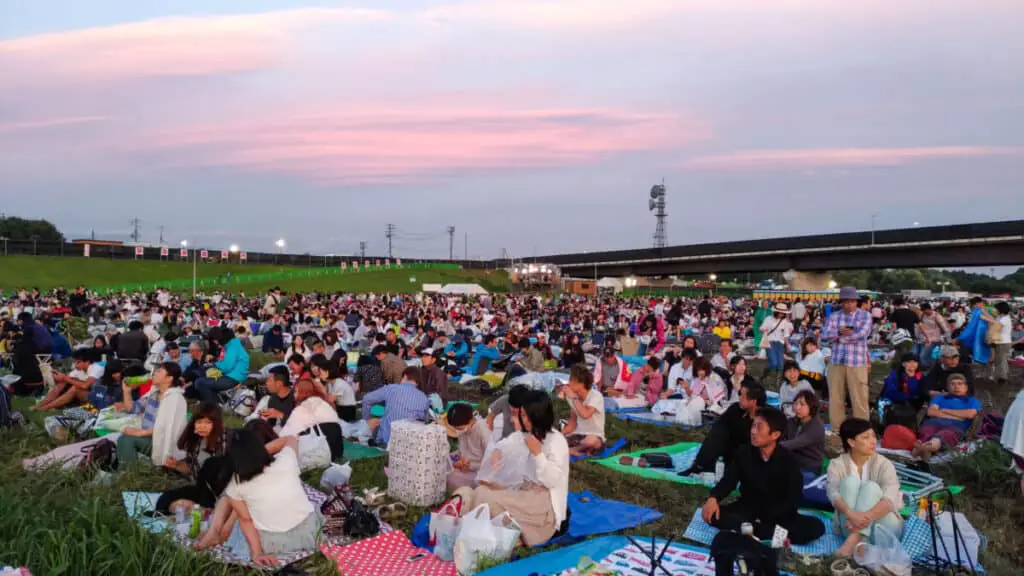
Held in Akita Prefecture along the Marukogawa and Omono Rivers, the Omagari fireworks only invite the best pyrotechnic teams in the country.
There are competitions during the day and night. Thousands of shells launch into the sky as teams compete for the top prize. This started in 1910 and more than 600,000 people gather for the event every year.
This is the only fireworks show in Japan that has a daytime exhibit, giving off colored smoke that paints the sky like a canvas.
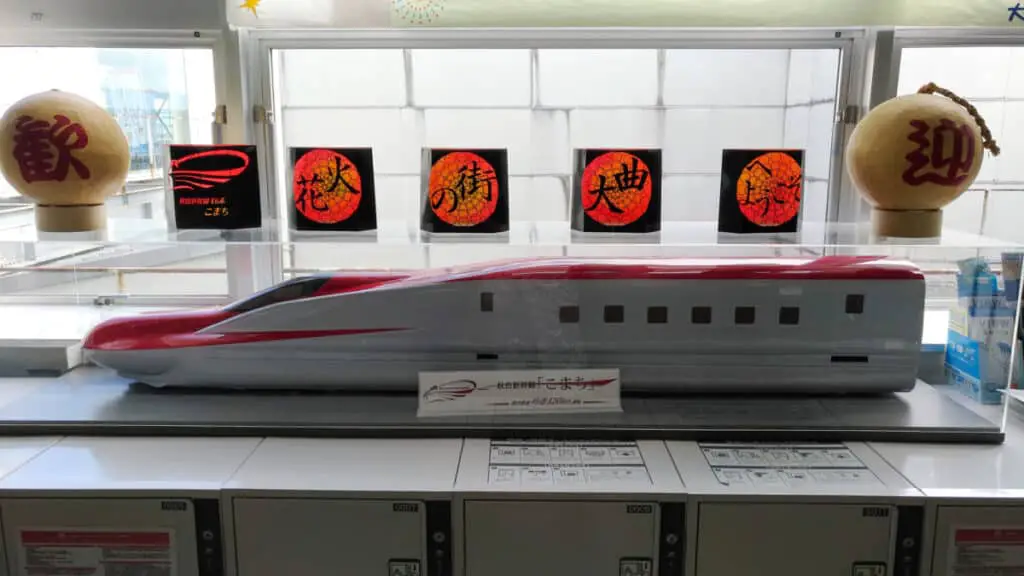
Tsuchiura Fireworks
Among the top three fireworks extravaganzas in the entire country of Japan, the Tsuchiura is a sight to behold. This is also a competition in the Ibaraki Prefecture and occurs along the Sakuragawa River. It’s held on the first weekend in November.
Pyrotechnic Genius
Since 1925, pyrotechnic companies vie for a position at this competition. They use top-notch and cutting-edge technology to emblazon some of the most innovative night scenes. This allows these pyrotechnic geniuses to network with brokers searching for next year’s presentations.
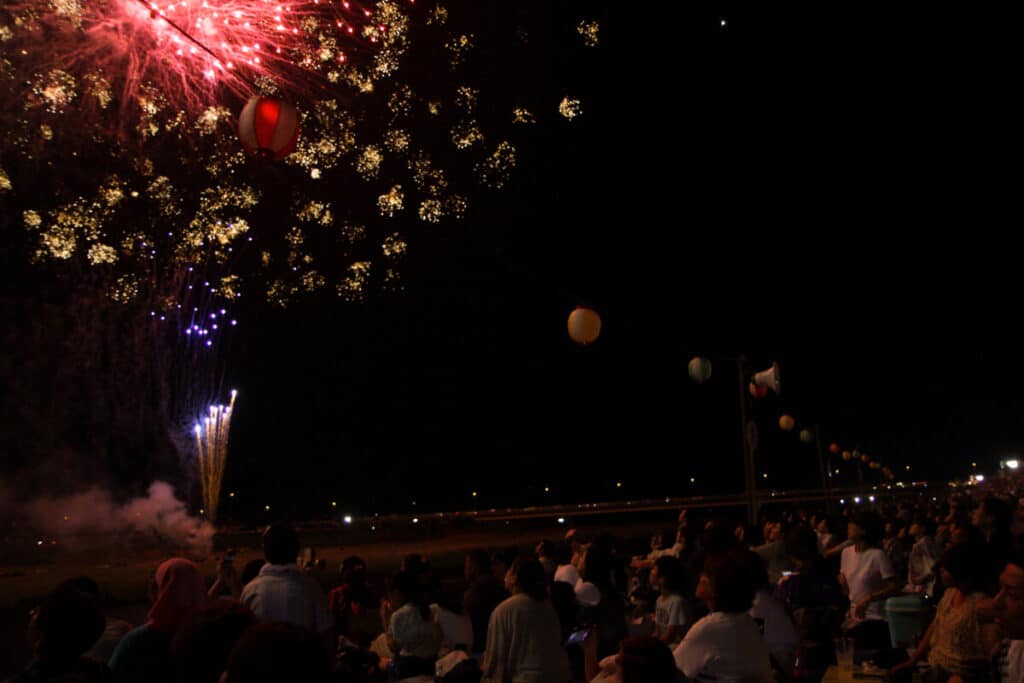
Unlike other festivals where it’s difficult to get a good view, visitors can see the display from almost anywhere in the city. However, it’s advisable to arrive early to secure a seat. But, visitors should also bring a tarp because most viewing spots are among freshly cut fields.
Osaka Tenjin Fireworks
While there are the top three fireworks shows in Japan, the Osaka Tenjin fireworks are a mere part of the Matsuri Festival, which is one of Japan’s Three Great Festivals. The others are Gion in Kyoto and Kanda in Tokyo.
An Ancient and Lively Festival
Around the third weekend in July on the Ogawa River, people gather from all over the country to celebrate the Festival of the Tenmagu Shrine.
This honors the deity of scholarship, Sugawara Michizane. Exuberant festivities and entertainments intended for the kami or god take place all day long.
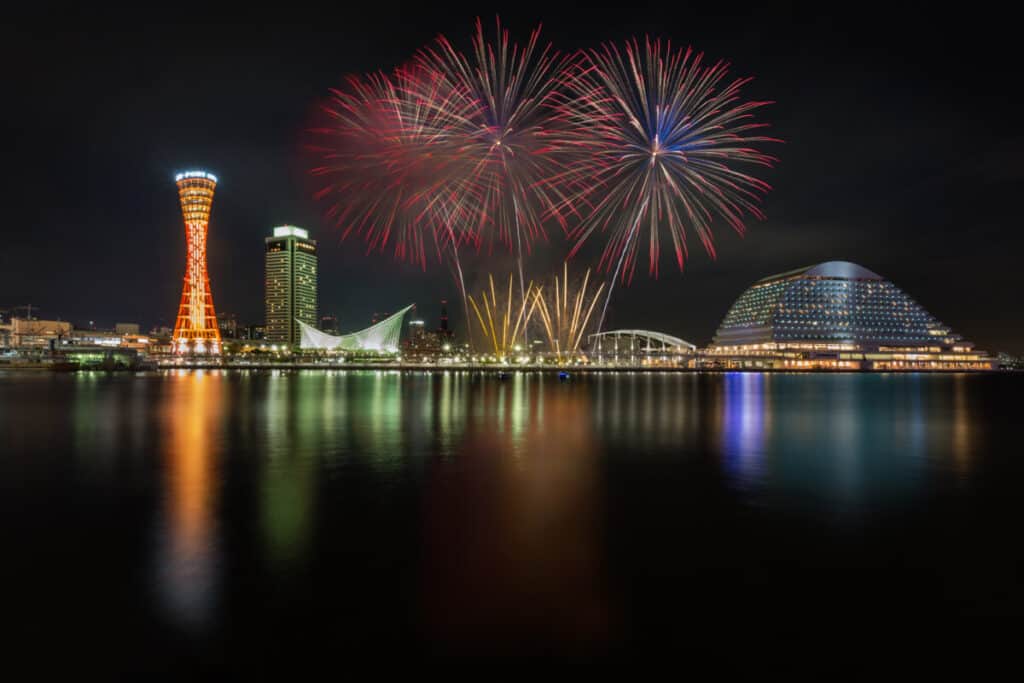
They set off 4,000 fireworks on the second night as a procession of fiery ships bears portable shrines. These flaming ships pass under illuminated bridges and carry people dressed in costumes of the period. Although not a large or showy fireworks extravaganza, the way Osaka lights up on the water amid the bridges is impressive.
Miyajima Fireworks
From mid to late August, the island of Miyajima holds its Hanabi festival. 5,000 fireworks launch from boats off the northern shore. The best view is at the Itsukushima Shrine.
When combined with the beauty of the shrine’s gate, it’s an iconic display of fireworks and a top spot for amazing photography.
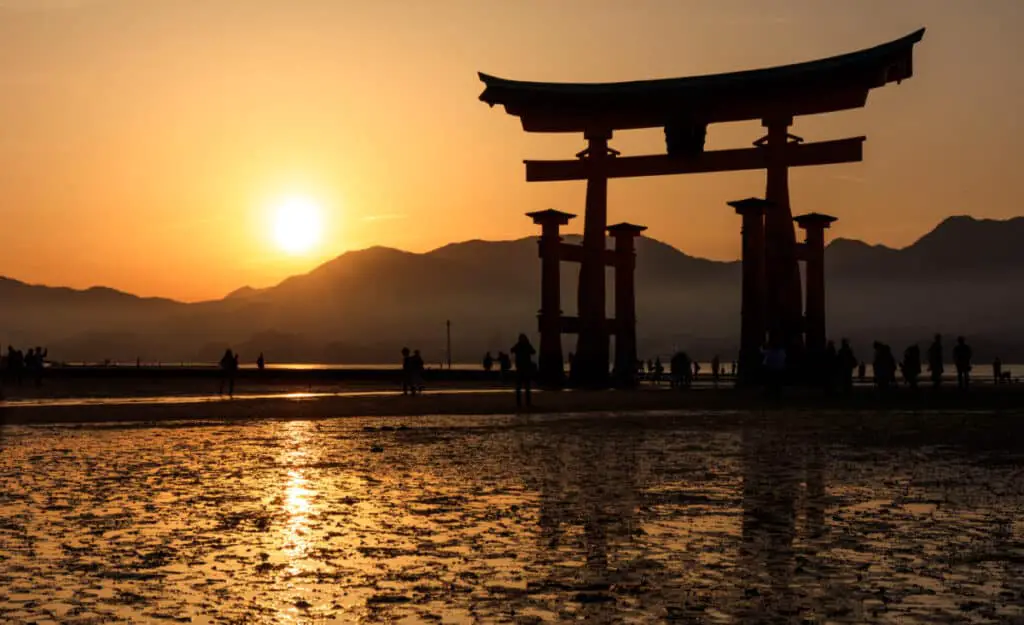
Each year the festival draws about 200,000 people, making it one of the bigger festivals. The view and the way the fireworks reflect off the water along with the shrine make it one of the more special experiences.
Chichibu Night Festival Fireworks of Kanda in Tokyo
While these fireworks sit outside the normal summertime schedule, the Chichibu Night Festivals are the best fireworks in winter. This is another of the Three Great Festivals in Japan.
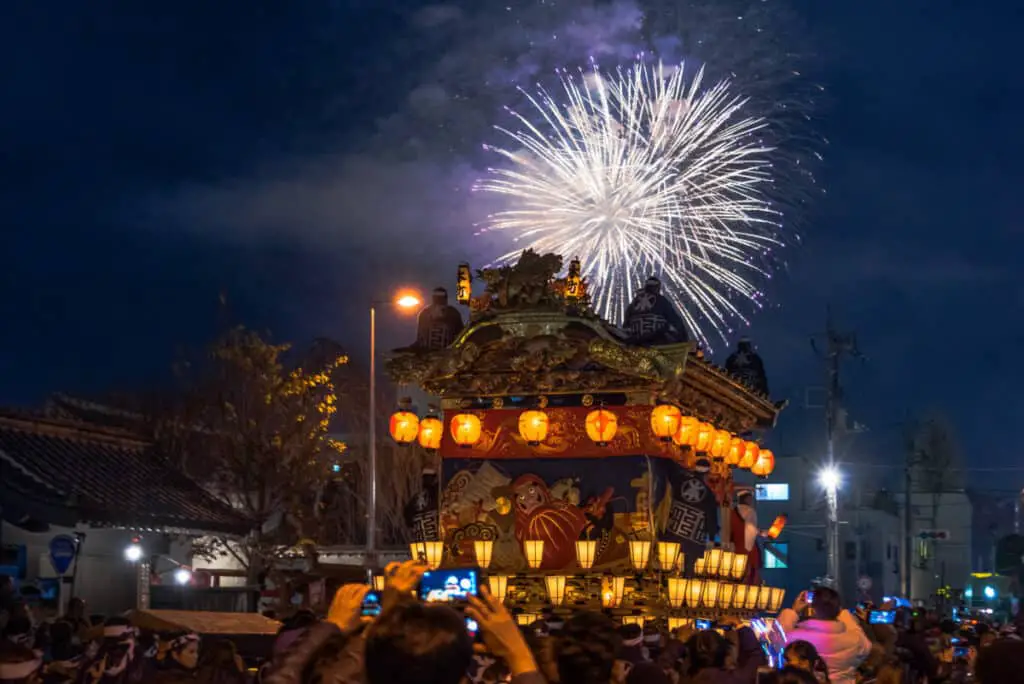
Often held on December 2nd and 3rd, the last night brandishes the largest and longest fireworks, lasting almost 2.5 hours. Visitors can see the display from many spots around town but buildings do tend to block the view.
Lake Toyako Fireworks
From April through October, 20 minute daily fireworks performances occur over Lake Toyako in Hokkaido. Although not the most spectacular, they are the most frequent throughout the spring and into autumn. They launch from a ship that travels along the shore and passes by large resort hotels.
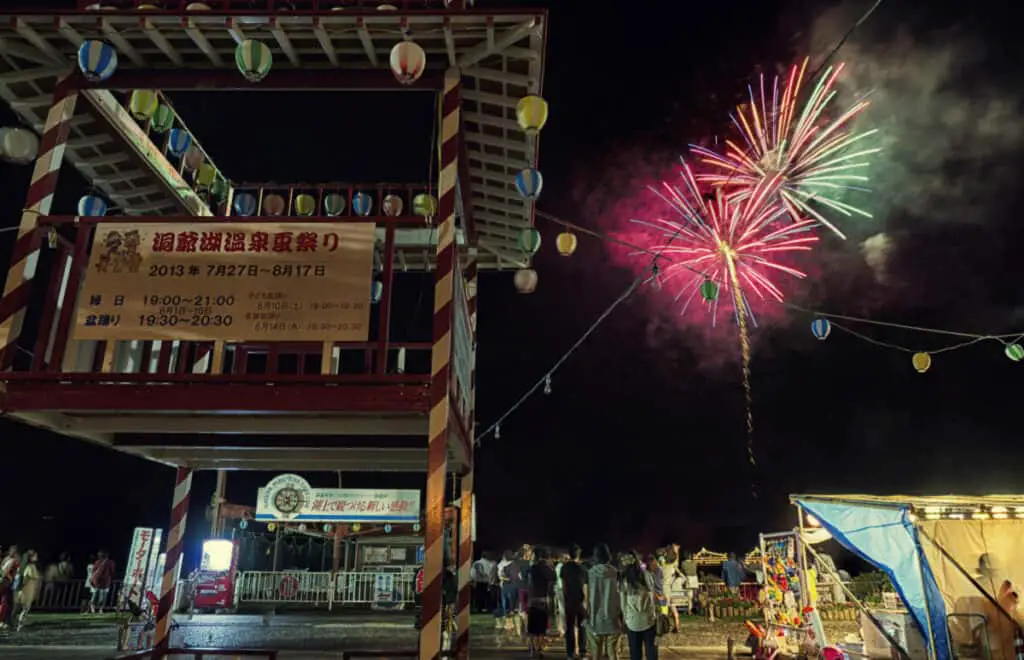
Naniwa Yodogawa Fireworks Festival
The newest and youngest of all the fireworks celebrations in Japan is the Naniwa Yodogawa of Osaka. Started in 1989 by a group of volunteers as an effort to widen the breath of life into the city, these feature handmade fireworks. Because of how many rivers are in Osaka, the neon explosions lights up the entire network of waterways.
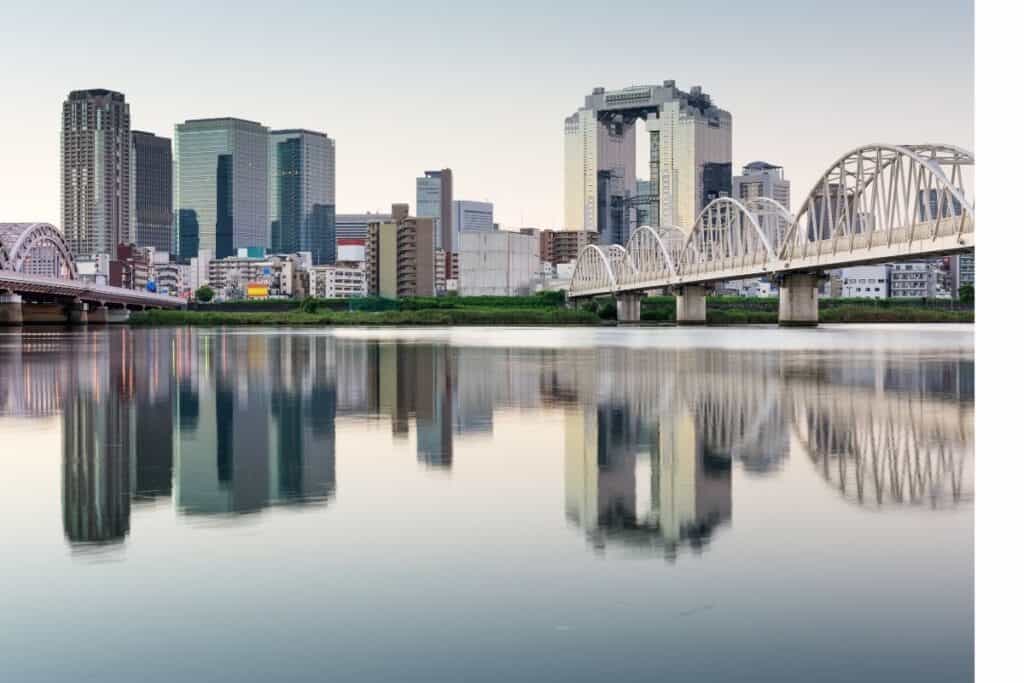
Final Thoughts
Japan has some of the world’s most breathtaking arrangements of fireworks in the world. Throughout the summer months and even one in winter, there are plenty of places for enthusiasts to visit.
Some exhibits are very ancient and long-standing traditions while others are young but just as impressive.
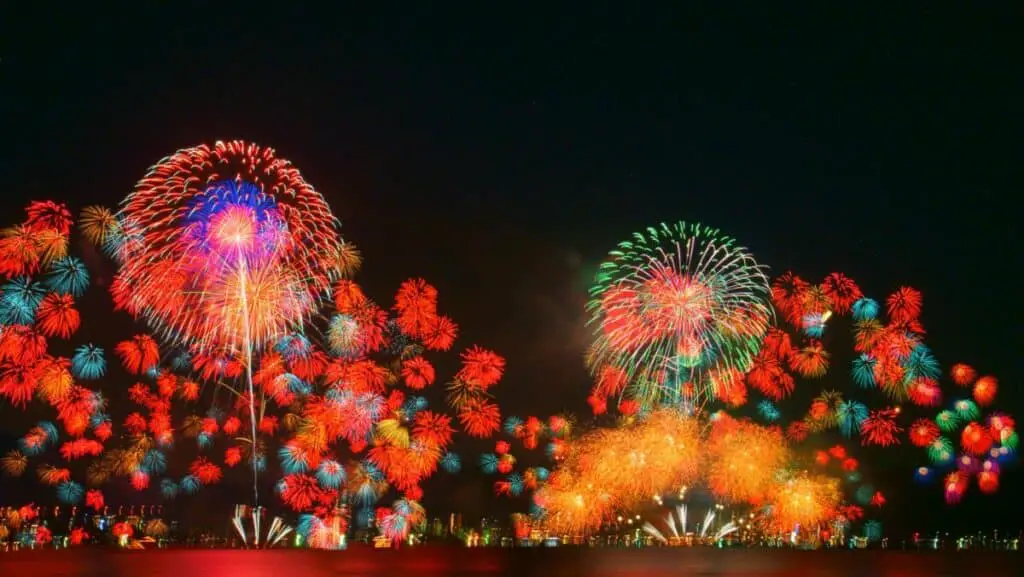
As today’s public fireworks may have more of a glitz and glamour aspect to the Hanabi demonstrations, they are traditionally meant to dispel evil spirits. Since fireworks tend to be part of many festivals that honor the kami, their displays come in the hopes to appease them for blessings in the year to come.
Virtual Fireworks Show From Japan (4K)

